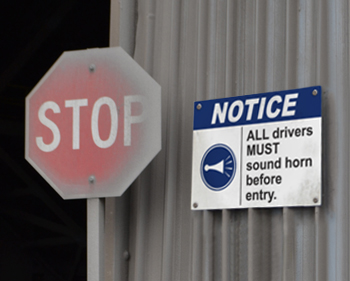Turning Around the Trend in Work Zone and Traffic Deaths
03
February,
2023
2 MINUTE READ

For most of 2020, the global advisory was to stay home as much as possible in response to the coronavirus pandemic. And yet, it marked a record year for vehicle deaths in the U.S., according to the National Safety Council (NSC). There's been some head-scratching by numerous safety professionals: How could emptier roads lead to deadlier consequences? One thing for sure is that the data shows the need for businesses to help by focusing on curbing workplace traffic deaths and improving workplace traffic safety.
Where to Go from Here
Workplace traffic deaths and injuries occur in parking lots, driveways, walking and working surfaces, or paths indoors or outside. The term traffic is workplace vehicles, like forklifts, trucks, or earth-moving equipment, and pedestrians, such as workers or site visitors.
The breakdown of the vehicle death numbers for 2020 is not yet available. But we already know that in 2019, 842 people were killed and 39,100 people were injured in work zone crashes, NSC said. If you look at the most recent Bureau of Labor Statistics report, it shows that a top culprit for work traffic deaths and injuries is forklifts. There is about 7,000 injury by forklift reports annually. There were 34 accident investigations completed by OSHA in 2019. Of those accidents, 27 were fatalities.
Pouring over OSHA reports from recent years, a few of the top causes for forklift injuries and deaths are:
- Unstable loads: Loads over the weight limit, improperly stacked, which can cause it to overturn.
- Traffic violations: Traveling faster than posted limits, not heeding signs, work boundaries.
- Distracted driving: Cell phones, earbuds, music, etc.
- Seat belts: No seat belt usage or broken/faulty belts.
- Defective/modified forklifts: Altering of forks, disabled safety features.
- Improper use: Standing on the forks, racing, or over-reaching while on a forklift.
- Fire/Chemicals: Using propane-powered forklifts near flammable liquids or carrying them.
- Struck-bys/Caught between: Pedestrians or workers in other vehicles hit by forklifts or wedged between loads, equipment, and other objects.
One critical action workplaces can take to curb potential injuries related to forklifts or other work traffic is to keep up workforce training. OSHA offers training materials for forklift and other powered industrial trucks that are based on forklift hazards and solutions, as well as applicable standards.
"Employers are responsible for ensuring forklift drivers are retrained after being involved in an accident or near-miss," said Robert Bonack of OSHA in Appleton, Wisconsin. "OSHA has specific regulations for disabling machines and equipment before maintenance and service. Injuries can be prevented by ensuring employees receive required training and follow safety procedures."
Drive Safety Culture
 While training and continuous safety approaches are necessary for the workplace, there are several additional steps that can reinforce that information.
While training and continuous safety approaches are necessary for the workplace, there are several additional steps that can reinforce that information.
- Lower speed limits for worksite traffic.
- Install traffic signs, lights, alarms, backup cameras, mirrors, and other traffic safety tools.
- Ban cell phone use and other distractive devices while walking or working in certain areas.
- Make sure lighting is appropriate for better visibility.
- Check seat belts for functionality and enforce seat belt usage on vehicles.
- Keep worker licensing up to date.
- Keep proper personal protective equipment ready to use and ensure it is used for traffic safety, such as helmets and hi-vis clothing.
- Create pedestrian safety paths separate from other work traffic.
- Consistently inspect traffic areas and equipment. Remove defective equipment and maintain it promptly.
Additionally, workplace behavior must set the tone for safety. Workplaces should have clear standards and expectations of safe working habits; for example, by not allowing employees to work and pass beneath elevated forklift booms or ride or race work vehicles. Management shouldn't look for ways to cut corners to save money by cutting back on safety. There are cost-efficient and effective tools like traffic signs, forklift labels, and high-visibility floor marking. While there is no noticeable trend among work traffic accidents, injuries, or deaths, they are constant and consistent. Workplaces can take the lead by making work traffic safety a priority.
RELATED RESOURCES

Use Forklift Safety That Sticks
There is no shortage of work for forklifts in material handling and other industries. Injuries and accidents ...
Read
Fewer Injuries, More Accidental Deaths in 2017
According to government agencies, workplace injuries may be going down but accidents that are killing workers ...
Read
Safety Tips to Drive Down Work Traffic Injuries
The Drive Safely Work Week and Distracted Driving Awareness Month campaigns serve as reminders for workplaces ...
Read.png)


